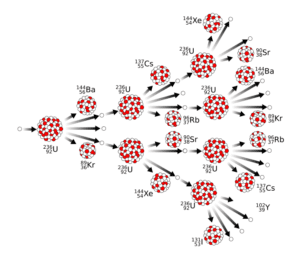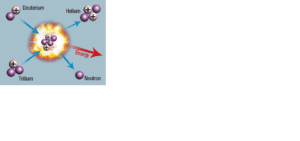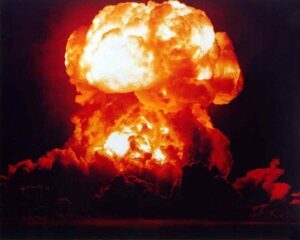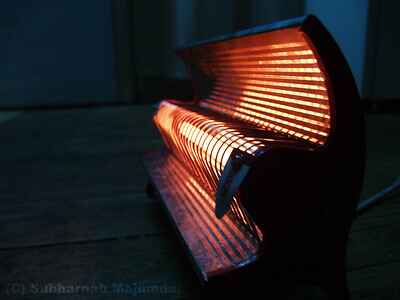5 Types and Forms of Nuclear Energy Explained
Types of nuclear energy are; fission-based and fusion-based nuclear energy. Forms of nuclear energy are kinetic, light and thermal forms.
This article discusses the types and forms of nuclear energy, as outlined below;
-Types of Nuclear Energy
1). Fission-based Energy (as one of the Types of Nuclear Energy)
Because nuclear energy is stored in the nucleus of atoms, it can only be released when the nucleus is subjected to chemical transformation through radioactive reaction and decay.
One of the two main mechanisms or reactions by which this occurs is nuclear fission; whereby an atom (and its nucleus) is split as a result of energetic bombardment, to yield smaller atoms called 'fission products' alongside significant amounts of energy.
Atoms that are susceptible to radioactive decay by fission are mainly isotopic, and have fissile chemical structures that allow them to breakdown with relative ease. Uranium-235 is an example of such isotopes [1].
Compared to nuclear fusion, fission is an easier and more flexible process, making it the more-commonly used means of extracting energy from nuclear fuel in a reactor.
Energy is produced from nuclear fission when an energetic stream of neutrons is used to bombard a radioactive material or fuel in the core of a nuclear reactor, causing its atoms to split and yield their energy content [3].
The amount of energy produced from nuclear fission is about 8.0 × 10^16 J/kg of uranium-235 fuel.
While this is a relatively enormous amount, the energy produced by nuclear fission is less than that from fusion, especially when input and output energy dynamics of the reaction are considered.

2). Fusion-based Energy (as one of the Types of Nuclear Energy)
Nuclear energy is released from fusion, which is a highly-potent radioactive reaction that accounts for natural solar energy generation.
The amount of energy that nuclear fusion can produce per kilogram is approximately 8.0 × 10^20 J, provided the reaction involves hydrogen isotopes with the primary product being helium.
This estimate far exceeds that of fission at 8.0 × 10^16 J/kg, and indicates the huge energy potential of nuclear fusion.
However, as of 2023 the only usable source of fusion-based nuclear energy is the Sun. Nuclear fusion is not yet possible as a domestic method of electricity generation due to technical challenges posed by the strong repulsion of equally-charged radioisotope nuclei.
A reported breakthrough in late 2022 regarding nuclear fusion technology implies that future years might experience advancements in fusion-based nuclear energy.

-Forms of Nuclear Energy
1). Kinetic Energy (as one of the Forms of Nuclear Energy)
Nuclear energy can occur in the form of kinetic energy that sends powerful shock waves through a medium.
This energy originates from electrostatic force which is displaced and released when the nucleus of a radioisotope undergoes radioactive transformation.
However, kinetic energy is only released when the nuclear reactions are uncontrolled, as in the detonation of nuclear weapons like the atomic bomb.
Under controlled conditions, the kinetic energy from nuclear electrostatic forces is converted to another form of energy, such as thermal.
2). Light Energy
Nuclear light energy is a form of nuclear energy that can be observed only in the event of a nuclear explosion.
It results from oxygen-based combustion, when nuclear chain reactions proceed under uncontrolled conditions.

3). Heat Energy (as one of the Forms of Nuclear Energy)
Heat or thermal energy is the most common and natural form in which nuclear energy occurs.
Nuclear energy produces heat from the work done as electrostatic forces are displaced and atomic nuclei are broken-down.
The energy released from nuclear processes is usually extremely hot, and this accounts for the high energy-output of nuclear fuels and power plants.
In order to generate electricity, this nuclear heat is captured and used to produce steam which drives a turbine and activates an electric generator [2].
Conclusion
Types of nuclear energy are;
1. Fission-based Energy
2. Fusion-based Energy
Forms of nuclear energy are;
1. Kinetic Energy
2. Light Energy
3. Heat Energy
References
1). Hollenbach, D. F.; Herndon, J. M. (2001). "Deep-Earth reactor: nuclear fission, helium, and the geomagnetic field." Proc Natl Acad Sci U S A. 2001 Sep 25;98(20):11085-90. doi: 10.1073/pnas.201393998. (Accessed 15 January 2023).
2). Jaszczur, M.; Dudek, M.; Sliwa, T.; Kolenda, Z. (2018). "An analysis of high-temperature nuclear reactor coupled with gas turbine combined cycle." MATEC Web of Conferences 240:05010. Available at: https://doi.org/10.1051/matecconf/201824005010. (Accessed 15 January 2023).
3). Sun, X. Y.; Luo, W.; Lan, H. Y.; Song, Y. M.; Gao, Q. Y.; Zhu, Z. C. (2022). "Chen JG, Cai XZ. Transmutation of long-lived fission products in an advanced nuclear energy system." Sci Rep. 2022 Feb 9;12(1):2240. Available at: https://doi.org/10.1038/s41598-022-06344-y. (Accessed 15 January 2023).




